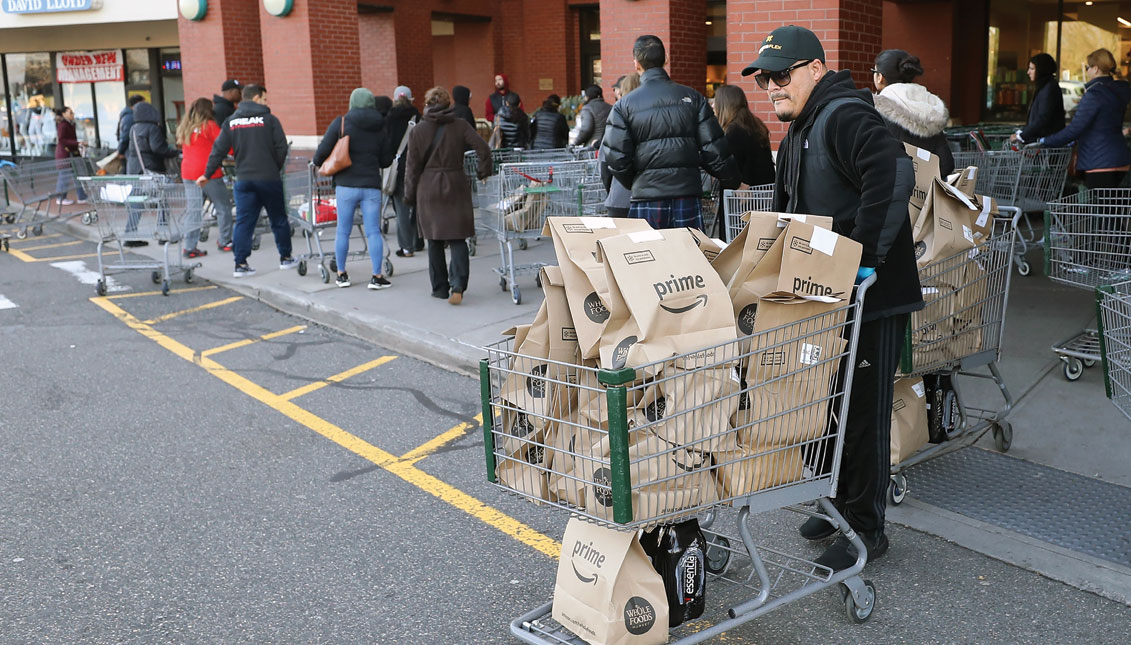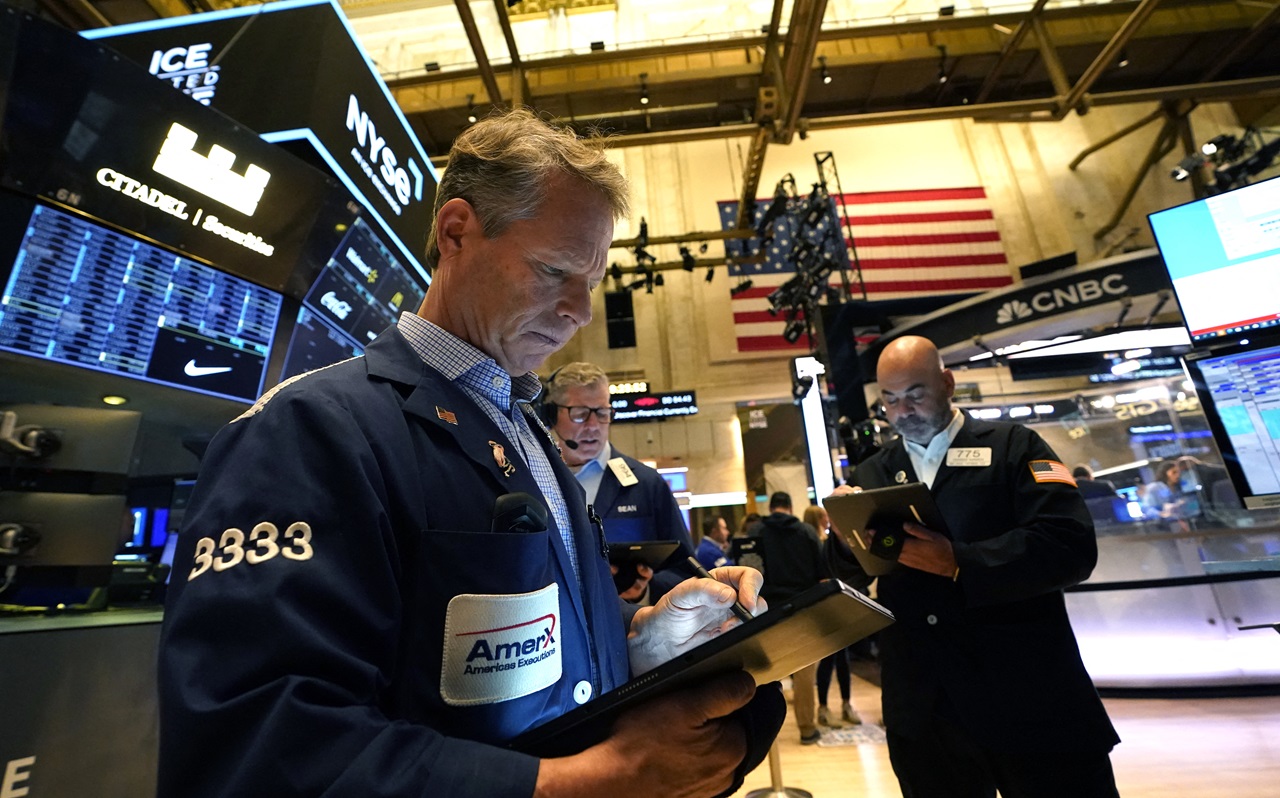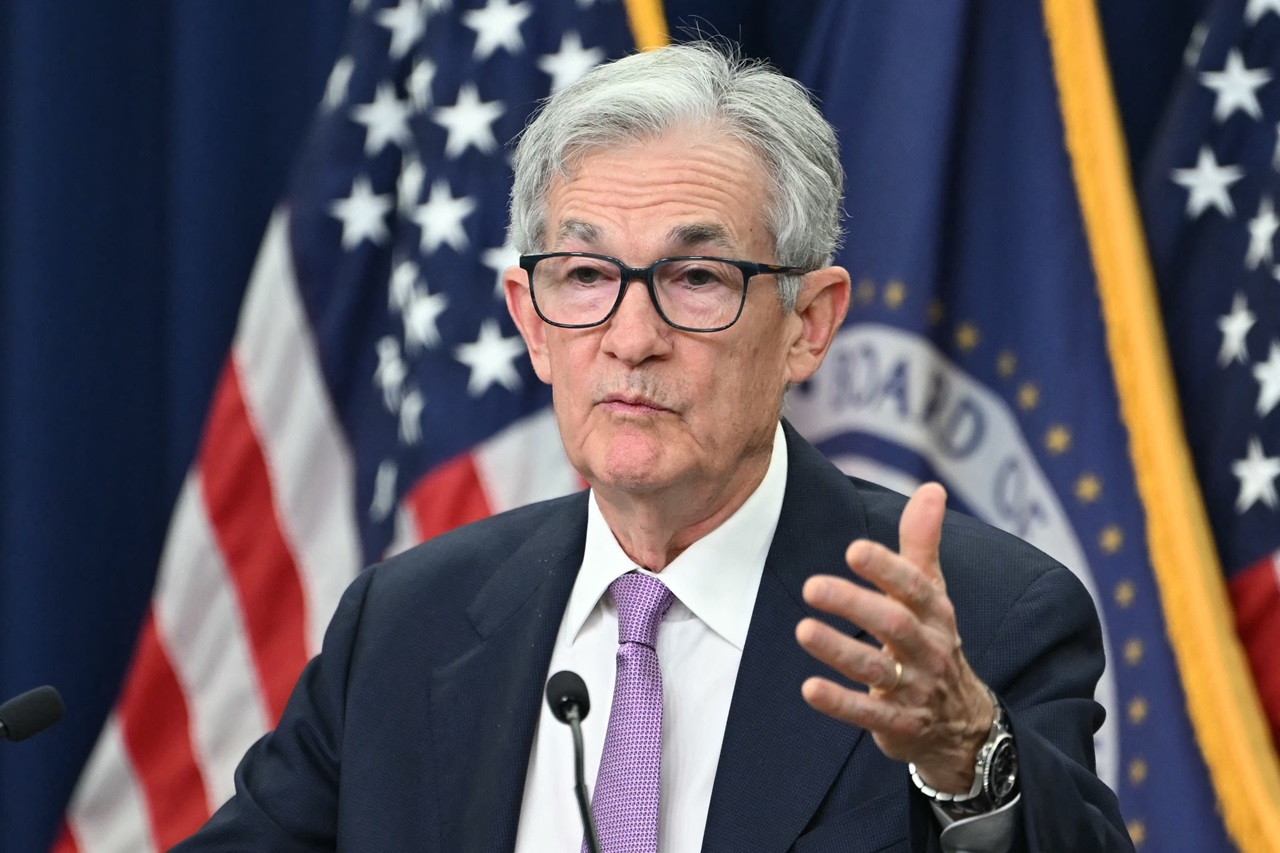
The Coronavirus against the Economy: The only way to contain the pandemic is by hitting the pocket
“Social distancing has been proven successful time and again to control epidemics, but it will hurt the economy.”
In a country that has proven to have an unequal and often unfair economic and health system, a pandemic as aggressive as COVID-19 is the worst news.
With over 5,700 cases reported in the country (and counting), the Trump Administration's divisionism has fallen short of the aggressiveness of a virus that does not distinguish between social classes and immigration status.
During the last week of February, as COVID-19 began to spread in Washington, Oregon, and California, officials at the Centers for Disease Control (CDC) were still measuring its scope.
They knew that older populations were more vulnerable and recommended extreme care on their behalf, but only briefly mentioned the idea of "social distancing" as a possible recommendation that local authorities might suggest to residents.
Cancellation of major events was considered in Washington State, but nowhere else. In the following days, cases increased from 22 to 60 and began to appear in East Coast states such as Florida, Rhode Island, and Georgia.
By March 10, COVID-19 cases increased tenfold in the United States, to more than 500 in 34 states. At this point, CDC again advised residents to avoid crowds and develop contingency plans for living at home for a period of time, and then state and local governments, as well as some private-sector actors, began adopting virus-containment measures, such as event cancellation and facility closures.
Containment of the pandemic, the effort to smooth out its exponential growth curve, hits the economy: the only way to decrease contagion is by making people relate less to each other - and this old trick has been proven since the oldest epidemics in history - but less circulation and less consumption affects businesses and producers, resulting in people's jobs once the epidemic is over.
To lessen the havoc caused by the disruption of distribution chains and the radical decrease in people's consumption, the Federal Reserve has reduced interest rates to almost zero.
As the economic shock looms over the United States, various measures have come from both the legislative and executive branches of government and from the Federal Reserve to lessen its severity as much as possible, as well as to ease the response capacity of federal health agencies.
On March 6, it was announced that Congress had approved the release of an $8.3 billion budget for the epidemiological containment of COVID-19. This fund will be distributed as follows: $3.1 billion to the Department of Health and Human Services (HHS), $950 million to local health departments, $300 million to invest in vaccine and treatment development, and $1.25 billion to contribute to international funding for pandemic control.
You have to imagine the problem on a small scale first, to understand how it affects you in larger proportions: think about the neighborhood you live in; ask them to stay home, make provisions for a couple of weeks and don't go out. They go to the store, buy what they need (or what they can, given the flood of people who have overbought and out-supplied others) and stay home.
At the same time, the places that sell other kinds of products (shoes, clothes, gyms, technology, etc.) can't do business because their customers are confined and the workers themselves must be too, so their finances get out of balance and many of them shut down.
Meanwhile, in the factories that supply the neighborhood store, the workers begin to get sick and have to be sent home; consequently, production stops and they cannot sell, even if they want to and there are people willing to buy from them. And this is being repeated everywhere.
Governments have many mechanisms designed to inject money into people's economies, to help that worker whose appliance store had to close because people were not buying from him. But in this scenario the production chain breaks down everywhere and to supply the production chain there is little that can be done: producing takes longer than delivering money.
Since there is no way to contain the pandemic without affecting the economy, central governments across the globe have announced palliative measures, but what we are seeing is that they will not be able to cope.
The House of Representatives introduced a law in response to the crisis called the "Families First Coronavirus Response Act", which will have a budget of more than $3.6 billion to subsidize needs such as infant feeding, feeding of pregnant mothers with few resources, disability payments to health care providers and other sectors of the population (although at this point they only contemplated $5 million for the whole country), $1 billion for compensation for unemployment caused by the epidemic and $500 million in subsidies to states where unemployment grows by 10% or more.
President Trump signed this bill on Saturday, March 14.
RELATED CONTENT
Another measure being considered is a radical reduction in taxes on the population. However, Democrats view this option with more caution, as it could mean a reduction of up to $800 billion in state revenue.
Additionally, the Federal Reserve announced a drop in interest rates to almost zero. In concrete terms, this seeks to make it more viable for people to access and pay back loans, or to pay off loans without their debt growing; this will apply to debts such as home mortgages, student loans and credit cards (although the impact at this point will take a couple of months to be felt). Ultimately, the goal of this measure is to ease people's economic burden, so that they can consume more and feed the economy.

When thinking about the impact this may have on Latino businesses, there are two points to start considering: according to the 2019 report from Stanford's Graduate School of Business on Latino entrepreneurship in the United States, Latino businesses generate about $470 billion in profits per year and employ an estimated 3.2 million people (according to 2016 data), which corresponds to 4% of the profits generated by businesses per year and 5.5% of the jobs in the nation.
Despite this, there are two aspects of Latino business that stand out: the first, as reported in the 2018 edition of the report, is that Latino businesses are generally more reluctant to take on debt with banks and rely more on personal savings. In this sense, it is very likely that to overcome the crisis, many Latino businesses will have to change their approach and take on new debt to finance their operation for a while.
The second aspect pointed out by the 2019 report, is that approximately half of Latino businesses have enough liquidity to operate for five months or more. However, this liquidity is often inversely proportional to the number of employees they have. In other words, smaller Latino businesses tend to be better prepared to weather lean times, but they are also the ones on which the least number of people depend directly, and to that extent, financing may take longer to reach these types of businesses.
The basic problem with this economic crisis that is looming over us is that it affects both consumption and the supply of products and the entire productive fabric necessary for the functioning of the economy and, consequently, for the continuity of our way of life.
The complexity of the issue is such that Noah Feldman, in an interview with Stefanie Stantcheva, professor of economics at Harvard, compared it to the fall of Rome and how this gave way to the beginning of the Middle Ages. Stantcheva, surprisingly, said that the impact could be equivalent.
The equivalence of that blow means that, because of the magnitude of the pandemic, the complexity, and variety of effects it is having, it is possible that once the health crisis is overcome (as has always been the case throughout history), the way in which our societies are reconfigured may be radically different from what we have today.
As Stantcheva pointed out, it is not only the growth of the epidemiological curve that needs to be smoothed out but also that of the economic crisis. Even so, in a world as interconnected and dizzying as the one we inhabit, it will be interesting to see how our society is transformed in the face of the imperative of having to stop.











LEAVE A COMMENT:
Join the discussion! Leave a comment.